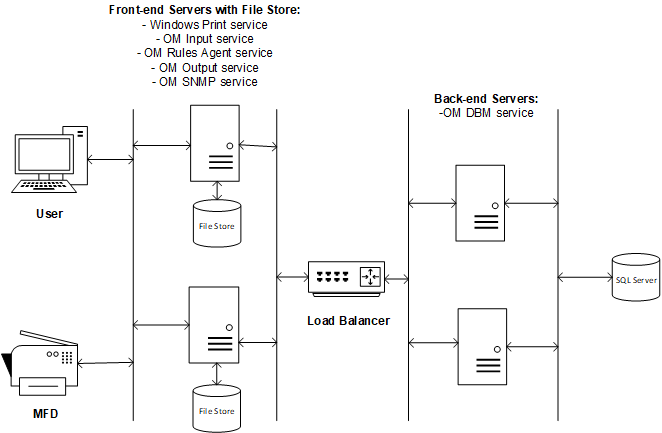Output Manager in a high availability environment
You can configure Output Manager to run in a high availability environment that is scalable and reliable. You can add as many physical back-end servers as necessary to meet the performance demands of a growing network.
When you configure an environment for high availability, you configure all the back-end Output Manager servers to function as a single logical Output Manager server. A load balancer receives requests from the client devices and distributes the requests to the servers. The load balancer ensures uninterrupted service if a server fails.

The front-end servers provide Microsoft Print service, and the OM Input and OM SNMP services. The back-end servers provide the OM DBM, OM Output, and OM Rules Agent services.
A distributed high availability environment is nearly the same high availability environment as before, but the front-end server now includes the Output service and Rules Agent service, while the back-end server only requires the DBM service. The protocol for distributed high availability must be http or https instead of Net.Tcp.

You might consider using a distributed high availability environment if:
- You have remote offices that need to communicate with a central database.
- You want an Output Manager file store that is local to the front-end server to reduce traffic over your WAN.
- You want to prevent the DBM service as a central point of failure.
